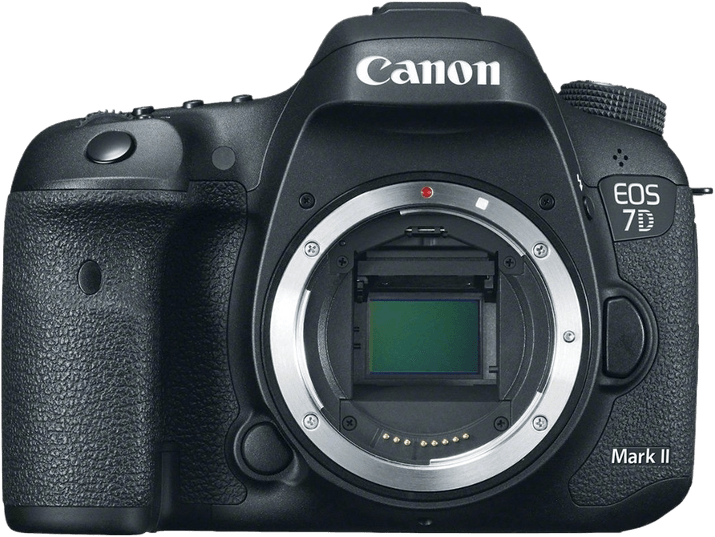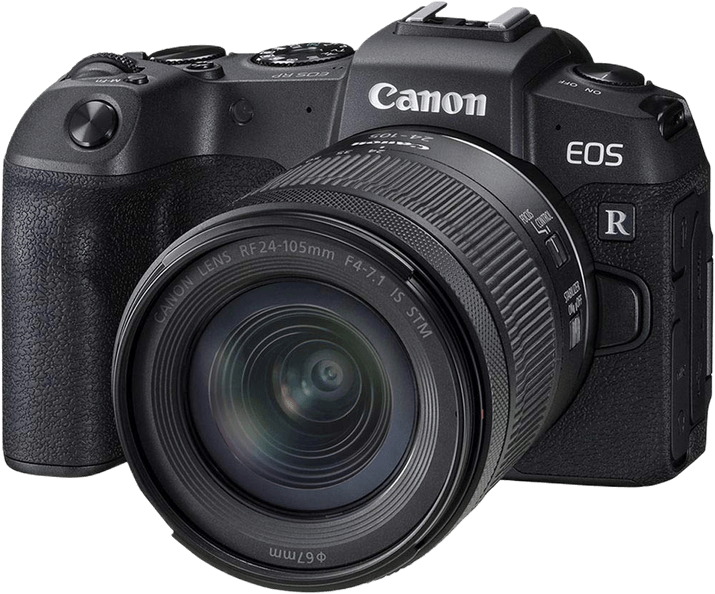Canon EOS 7D Mark II vs EOS RP Comparison
Canon EOS 7D Mark II

Canon EOS RP

The Canon EOS RP emerges as the winner with a score of 65/100, while the Canon EOS 7D Mark II scored 60/100. Both cameras share similarities, such as being released by Canon, having a launch price, and being announced in their respective years.
The EOS RP outshines the 7D Mark II with its compact size, measuring 133 x 85 x 70mm, and lightweight design, weighing only 440g. Additionally, it is a more recent release, hitting the market in 2019 at a lower launch price of $1300.
On the other hand, the 7D Mark II, a DSLR camera released in 2014, is bulkier, measuring 149 x 112 x 78mm, and heavier, weighing 910g. Its launch price was $1800, making it more expensive than the EOS RP.
Taking these factors into consideration, the Canon EOS RP is a better choice for those who prioritize a compact and lightweight camera with a lower price. The Canon EOS 7D Mark II may be suitable for those who prefer a DSLR camera and don’t mind the extra weight and size.
Canon EOS 7D Mark II vs EOS RP Overview and Optics
The Canon EOS RP outperforms the Canon EOS 7D Mark II in optics with a score of 67/100 compared to the latter’s 61/100. Both cameras share common specifications such as a CMOS sensor, no image stabilisation, and compatibility with Canon lenses. However, there are significant differences that contribute to the higher score of the EOS RP.
The EOS RP has a higher resolution with 26 megapixels compared to the 7D Mark II’s 20.2 megapixels, resulting in sharper and more detailed images. Additionally, the EOS RP features a full-frame sensor, which provides a broader dynamic range, better low-light performance, and shallower depth of field compared to the APS-C sensor found in the 7D Mark II. The superior sensor quality of the EOS RP is further evidenced by its DXOMARK score of 85, compared to the 7D Mark II’s score of 70.
Despite its lower score, the 7D Mark II possesses some advantages, specifically in its shooting speed. With a rate of 10 frames per second, the 7D Mark II is better suited for capturing fast-moving subjects and sports photography compared to the EOS RP’s 5 frames per second. Additionally, the 7D Mark II features a dual Digic 6 processor, which allows for faster image processing and better overall performance.
While the Canon EOS RP excels in resolution, sensor size, and overall image quality, the Canon EOS 7D Mark II holds an advantage in shooting speed and processing power. This makes the EOS RP more suitable for photographers seeking high-quality images and low-light performance, whereas the 7D Mark II is better suited for action and sports photography.
Canon EOS 7D Mark II vs EOS RP Video Performance
The Canon EOS RP emerges as the winner in terms of video capabilities, with a score of 70/100 compared to the Canon EOS 7D Mark II’s 56/100. Both cameras share some common video specifications, including the ability to record video in MOV and MP4 formats, as well as supporting H.264 compression.
The EOS RP’s superiority is evident in its maximum video resolution of 4K (3840 x 2160), whereas the 7D Mark II’s maximum resolution is Full HD (1920 x 1080). This means that the EOS RP can capture higher-quality, more detailed footage than its counterpart. Furthermore, the EOS RP has built-in time-lapse functionality, allowing users to create stunning time-lapse videos without the need for additional equipment or software.
On the other hand, the EOS 7D Mark II has a higher maximum video frame rate of 60fps, compared to the EOS RP’s 25fps. This enables the 7D Mark II to capture smoother, more fluid motion in its videos, which may be desirable for certain applications such as sports or wildlife videography.
In terms of video capabilities, the Canon EOS RP is the clear winner with its 4K video resolution and built-in time-lapse functionality. These features make it a versatile and powerful tool for videographers seeking high-quality footage. However, the Canon EOS 7D Mark II still holds its ground with a higher maximum frame rate, making it a suitable choice for those who prioritize smooth motion in their video projects. Ultimately, the decision between these two cameras will depend on the specific needs and preferences of the user.
Canon EOS 7D Mark II vs EOS RP Features and Benefits
The Canon EOS RP outperforms the Canon EOS 7D Mark II in features, scoring 70/100 compared to the 7D Mark II’s 57/100. Both cameras share some specifications, including a 3-inch screen size, screen resolution of 1,040,000 dots, and WIFI connectivity.
The Canon EOS RP surpasses the 7D Mark II in user-friendly features, such as a touchscreen, a flip screen, and Bluetooth connectivity. The touchscreen allows for easier navigation through menus and settings, while the flip screen provides flexibility when composing shots from various angles. Bluetooth connectivity enables seamless connection to compatible devices for instant sharing and remote control.
On the other hand, the Canon EOS 7D Mark II has an advantage in GPS functionality, which the EOS RP lacks. GPS allows for geotagging images, making it convenient for photographers who need to track locations during outdoor shoots or travel photography.
Despite the absence of GPS, the Canon EOS RP remains the better option in terms of features, offering a more versatile and user-friendly experience. The touchscreen, flip screen, and Bluetooth capabilities provide significant advantages over the 7D Mark II, making it the preferred choice for photographers looking for an easy-to-use camera with modern features.
Meanwhile, the Canon EOS 7D Mark II’s GPS functionality may appeal to a niche group of photographers who prioritize location tracking. However, its feature score remains lower than the EOS RP, indicating that overall, the EOS RP offers a more comprehensive set of features that cater to a wider range of photography needs.
Canon EOS 7D Mark II vs EOS RP Storage and Battery
The Canon EOS 7D Mark II outperforms the Canon EOS RP in storage and battery, scoring 65/100 compared to the EOS RP’s 29/100. Both cameras accept SD, SDHC, and SDXC memory cards, but the 7D Mark II has an advantage with two memory card slots and Compact Flash compatibility.
The 7D Mark II’s battery life is superior, offering 670 shots with its LP-E6N battery, while the EOS RP’s LP-E17 battery provides only 250 shots. However, the EOS RP has the benefit of USB charging, which the 7D Mark II lacks.
The Canon EOS 7D Mark II is the clear winner in storage and battery due to its longer battery life and additional memory card slot, making it more versatile and reliable for extended shooting sessions. The Canon EOS RP’s USB charging feature is a notable advantage, but it does not compensate for its shorter battery life and single memory card slot.
Canon EOS 7D Mark II vs EOS RP – Our Verdict
Are you still undecided about which camera is right for you? Have a look at these popular comparisons that feature the Canon EOS 7D Mark II or the Canon EOS RP:

